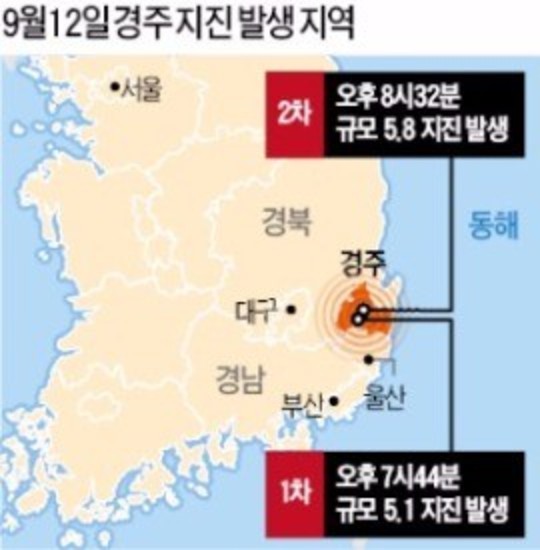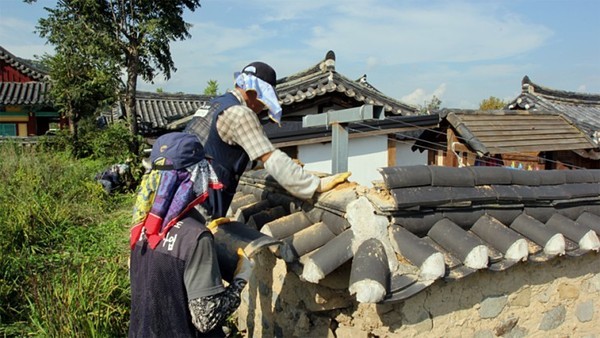As usual, while walking along the street, Gyeongju citizens were enjoying as they were sharing their interests with their friends and families. Nobody knew what would happen at that peaceful moment. Suddenly, everything started to shake. Windows were being broken, and household belongings were falling on the floor. People in terror were screaming and panicking.
As there were only a few earthquakes that happened in Sooth Korea before, only a few people knew how to cope with an earthquake. It resulted in overall chaos and kept people from being calm. A magnitude 5.1 earthquake occurred in Gyeongju at 7:44 p.m. on September 12th, 2016, with another following magnitude 5.8 tremors which happened at 8:32 p.m. on the same day.
 ▲ seismic centers of Gyeongju earthquake
▲ seismic centers of Gyeongju earthquakeAfter perceiving the vibration, the Ministry of Public Safety and Security (MPSS) sent an emergency text to people who lived nearby the seismic center at 8:40 p.m. However, only 9 million people among 21 million people could receive the text message since a great number of horrified citizens tried to call their families at the same time, leading to a paralysis of telecommunication networks.
The disaster caused considerable damage to several cultural properties such as Bulguksa Temple and Cheomseongdae in Gyeongju, the old capital during the Shilla kingdom which collapsed in 935 A.D. In addition, some nuclear power plants temporarily became stationary in order to prevent additional disasters. The vibration was detected in all national regions because of its overwhelming power. The power was as strong as a simultaneous explosion of 500,000 tons of TNT bombs.
 ▲ people restoring the damaged cultural asset
▲ people restoring the damaged cultural assetEven after the two massive vibrations, more than 600 aftershocks with a 1.5 magnitude or greater occurred until November 15th, 2017. Paradoxically, the disaster made South Korea cope with the potential danger of additional earthquakes. Students were taught how to evacuate when an earthquake happens. Governments were able to find out the weak point of their disaster response system. However, proactive inspection and improvement are far better than acting after a severe disaster. Thus, we must not forget the Gyeongju earthquake.
July 17th, 2021
by Jang Bomin
다른 곳에 퍼가실 때는 아래 고유 링크 주소를 출처로 사용해주세요.


월평중 2학년